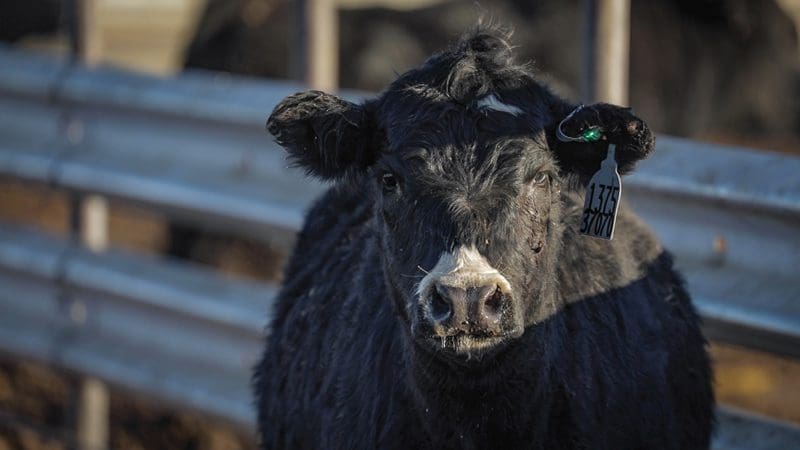By Patti Wilson, Contributing Editor
It is difficult for a paper-and-pencil kind of person to wrap my elderly head around the latest health technologies that are being developed for the cattle industry.
When I say cattle, this includes dairy, a segment that often leads the way in new ideas. It’s an effective proving ground for many new products, as milk cows are managed in a very hands-on, controlled environment. Eventually, the programs and aids invented by ambitious dairy people and their product suppliers make their way to a grateful beef industry. From there, yet another generation of science and technology emerges.
An Evolutionary Problem
Every livestock producer knows the predictable behavior of their cattle when they are approached in a pen or pasture. Their instinctive reaction is to stand up and face you; they are reading the situation, an evolutionary defense mechanism honed by millions of years of survival. Additionally, any stock that’s even slightly under the weather will immediately brighten up, discarding telltale symptoms. This is another defensive strategy that discourages predators from taking down the weakest in the herd.
It is also an annoying habit that makes a pen rider’s life a lot more complicated; one must stay sharp to spot a critter that’s trying to fool you. Inevitably, an animal that needs treatment gets missed, or one may even get treated that didn’t need to be, in an effort by a pen rider to be thorough. Although feedlot cowboys are a competent and professional group, these things can happen. Either way, it’s expensive.
This scenario is evidenced at packing plants, where damaged lungs are sometimes found in cattle that have never been treated.
Additional stress may be caused to a pen of cattle simply by stirring, searching for sick individuals or trying to read ear tags. Think of this when pens are muddy or icy and slick, and your cowboy is horseback. Steers aren’t the only ones suffering uncomfortable circumstances.
A Space-Age Solution
One of the newest and most advanced products available is SenseHub Feedlot, an ear tag made by Allflex Livestock Intelligence. It is being marketed through Merck Animal Health. Dr. Jason Nickell, director of insights and outcomes at Merck, explains the technology is especially efficient in helping diagnose cattle with bovine respiratory disease (BRD).
First, the tag is applied in the same manner as a traditional Allflex tag. It contains one AAA battery, encased in a waterproof fitting. The tag measures animal temperature by an infrared thermistor. Animal activity is read by an accelerometer and analyzed by algorithms. These means detect changes signaling sickness.
Recordings are sent to the office computer via an antenna located pen side. When a pen rider comes to work, he will first go to the office and receive a readout sheet; cattle with health issues will be noted on the report, pulled and treated.
Finding the animal that’s under the weather is a snap … or a blink; each tag is equipped with an LED light. Sick cattle will be wearing an illuminated and blinking ear tag. This solves searching the pen for pulls, finding tag numbers and stirring up the whole group. Caregivers always determine the cause of pull, whatever the issue may be, and provide appropriate treatment.
What About the Tag?
Nickell explains that the ear tag retention has run >90 percent in feedlot tests, the same figure as regular Allflex tags. The AAA battery is expected to last approximately three years; therefore, it can be used several times during its lifespan. (Tags are disposed of when the batteries die – they are not replaceable due to their waterproof encasement). The same antenna that sends health information back to the office detects batteries that are failing or dead and sends that information on, as well.
Antennas work in a range of up to two miles. This is important to folks running yearlings on grass or cow-calf producers who may want to use the product. The tags have been tested thoroughly in feedlots, but stocker and cow outfits are still largely untried but expected to work well, depending on pasture size.
Retrieving tags from finished cattle may sometimes need to be done at the packing plant, with a feedlot representative at hand. This will be done, no doubt, case-by-case.
Advantages in Efficiency
Pen riders operate during daylight, for obvious reasons. These ear tags are a 24/7 monitoring device that can literally “watch” your cattle continuously. One perk is this product can identify cattle before they exhibit outward symptoms of illness, leading to a more efficient catch of sick stock, earlier treatment and more positive end results.
In a contemporary world, the labor situation seems to be in a turmoil. Savings in time for feedlot owners and personnel, as well as less stirring of cattle, will make for more prudent use of help and minimize stress on livestock. Research done at an Oklahoma feedyard showed that feedlot riders who observed cattle visually entered an average of 18 pens per day, compared with only 5.3 pens per day on average when using SenseHub Feedlot ear tags, a 71 percent reduction.
But What Does It Cost?
Cost of each ear tag is $29, with an activation fee of $4.20 for each use. Studies done thus far indicate a two to four-fold benefit from the investment.
By the numbers, these tags have a proven benefit of decreasing mortality by two percent.
Payment can be made up front or conveniently arranged over time.
Traditional observation of cattle will always be an important skill in bovine management. Feedlot personnel take a great deal of pride in their stockmanship abilities, often spanning generations. New technologies are here to add another dimension of skill, increase efficiency and help relieve labor shortages. It all adds up to greater holistic management, bettering the lives of our cattle and reducing risk to producers.







